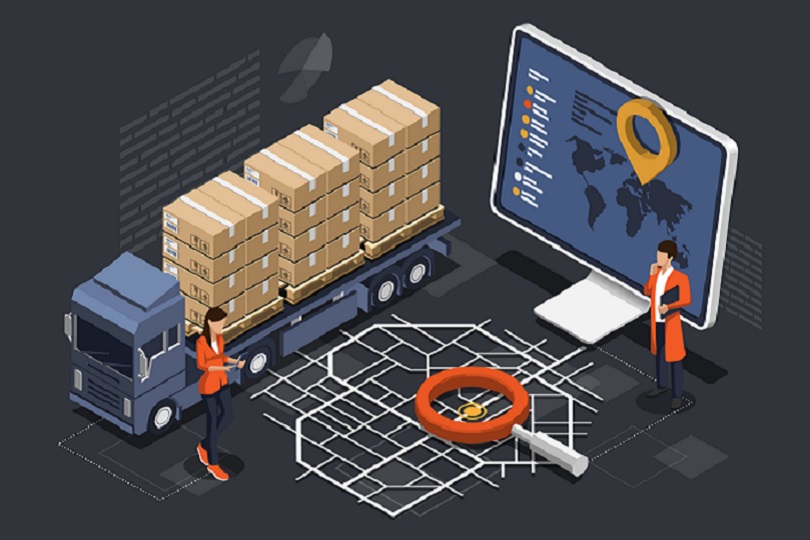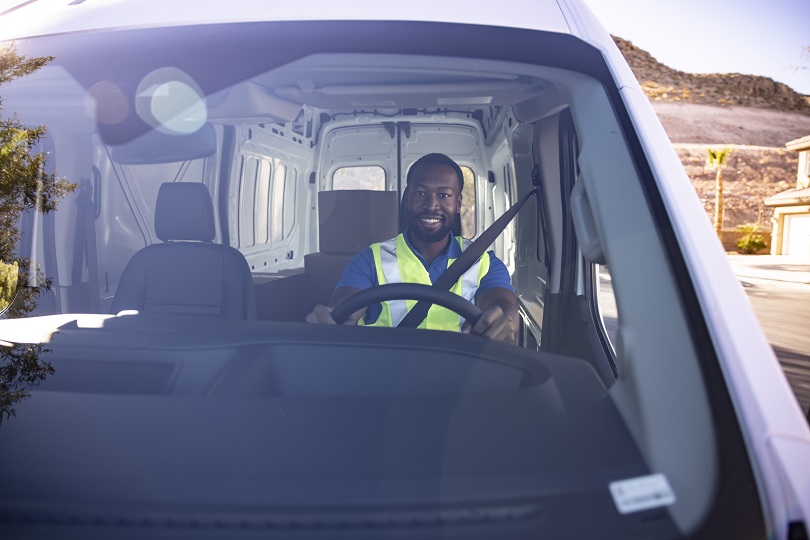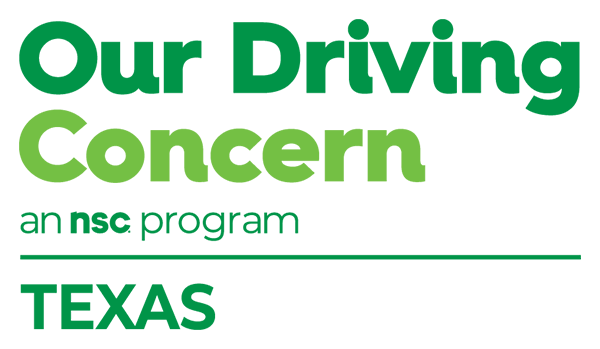Be Nice, Look Twice
During a recent appearance on BCB Live – The Safest Station in the Nation, Kenny Ray shared motorcycle safety tips with host Drive Safe Dave. Ray is a risk consultant with Cline Wood, a Marsh & McLennan Agency, and a former Texas Ranger. He also has led free online transportation safety training sessions for Our Driving Concern.
He has been riding motorcycles since he was a boy and has crashed twice. On the first occasion, a dog ran out in front of him and he lost control of his cycle. Ray was hurt. His motorcycle was destoyed. On the second, he said a young girl made an illegal left turn into a traffic lane filled with law enforcement riders. One of Ray’s friends nearly was killed. Ray was hurt and rushed to a nearby hospital. His motorcycle was destroyed.
He told these stories on the streaming talk show that aims to help logistics professionals and truck drivers stay safe on the road as part of a motorcycle awareness campaign. He pointed out motorcycles and motorcycle riders always lose in crash incidents, no matter who is at fault. “You die or you get hurt,” Ray said.
About 15 people die every day in motorcycle crashes across the U.S. Ray asked: What if 15 people died every day in small plane crashes? He said it would cause a public outcry. He spoke about complacency, saying he has grown tired of a prevailing “no big deal” attitude toward motorcycle crashes. “It’s a big deal to the motorcyclists and their families,” Ray said.
The reason this matters now is you have a chance to be part of the safety solution leading up to National Ride to Work Day on June 20. Ray expects this to big a big year for motorcycles and riding, in part out of necessity. As gas prices soar, many are looking to save money by using more fuel-efficient forms of transportation.
Ray said 4 in 10 crashes are single-cycle crashes. The primary factors contributing to these crashes are speeding and alcohol. He said the remaining 60% of motorcycle crashes involve cars. Too often drivers miss seeing motorcyclists and encroach on their road space. Ray spoke about sharing the road and offered these two ideas:
- What can bikers do? Wear a helmet. He said it is the No. 1 way to reduce severe injuries and cut down on deaths.
- What can drivers do? Pay attention. Be aware of blind spots and turning into motorcyclists, particularly at intersections. Motorcycles are smaller and much less visible than cars and trucks. They don’t offer the protection of a crash cage, either.
By providing education and training, you can help motorcycle riders and motorists stay safe. Here are some ways to raise awareness at your location:
- Look Twice for Bikes: Download, print and display our safety poster (or share it digitally)
- Safety tips: Get tips and free resources to share from the Texas Department of Transportation, including a Look Twice instructional animation video.
One motorcyclist dies every day in a crash on Texas roads, according to TxDOT. Last year, 519 riders lost their lives and 2,318 were seriously injured. Ray has been lucky to survive two close calls. You can help others take luck out of the equation.

Smart Solutions
Many working in the trucking industry or the fleet arena use in-vehicle monitoring systems as tools to collect vehicle data and report on driver behavior. But how do you find the data points that can help you cut costs? And how do you successfully deploy new safety technologies?
Learn how in our next free online training session Tuesday, June 14 (10-11:15 a.m.): Turning Technology into Results.
Brian Fielkow, CEO of Houston-based Jetco Delivery and a recipient of this year’s National Safety Council “CEO’s Who Get It” recognition, will team with Hayden Cardiff during the 75-minute presentation. Cardiff is the founder and chief innovation officer at Idelic, a driver-performance management platform built for fleet professionals. The two will discuss:
- How to overcome resistance to integration of new safety technologies, including strategies to get your drivers and managers on board with change
- Turning safety data into performance improvement
- Predictive analytics: Using data to capture your leading indicators
In-vehicle monitoring systems can be effective at reducing crash incidents and improving driver skills. This is accomplished by tracking metrics for speeding, sudden braking, harsh acceleration and seat belt use. Tracking allows safety leaders to watch for real-time trends and use reports to score and coach drivers.
The benefits of today’s vehicle technologies can be far-reaching. Smooth driving is less taxing on a truck’s engine. This can reduce maintenance costs and extend the life of fleet vehicles. Want to know more? Get your questions answered by Brian Fielkow and Hayden Cardiff in our next free online training session: Turning Technology into Results. Register to attend now.
Safety technology is the new normal. And it’s NOT JUST FOR VEHICLES: Explore safety technologies being used to mitigate risks in the workplace.
Fleet Telematics Study Needs Participants

You’re invited to join the National Safety Council and Johns Hopkins University in a driver safety study designed to understand the impact of fleet safety improvement programs.
There is no cost to participate.
You will get online safety training for your drivers, pilot fleet telematics and gain insight into driver behavior by tracking speed compliance, distraction and hard-braking events. You can document trends and use reports to score and coach drivers.
We’re looking to partner with fleet companies with 200 or more drivers using passenger vehicles (cars, SUVs, pickup trucks and vans) or light trucks. All study participants will voluntarily use their mobile phones to download a driver monitoring app provided by Cambridge Mobile Telematics, a leader in safe driving technology.
If you would like to learn more about this opportunity, please email National Safety Council Research Manager Sergey Sinelnikov: [email protected].
The confidentiality of all employer and employee participants will be protected, and no personally identifying information will be released.

